The first view is that people originally wore necklaces to show strength and bravery.
Because of archaeological discoveries, the “Stop Cave Man” in Zhoukoudian, Beijing, used string ornaments hundreds of thousands of years ago. The string ornaments at that time were made of animal bones, teeth, shells, etc., and dyed red with dye. There are many more materials now, including pearls, corals, etc. It can be seen that human development is still very fast. In the fight with beasts, people find that losing the bright red blood means losing life. At the same time, they also deeply feel the power of the teeth, limbs and claws of beasts. After people win a hunt, they string together the remaining animal bones, teeth, and claws and dye them red to show their bravery and strength; secondly, they also hope to absorb all the power and strength of the beasts. vitality. Necklaces were born.
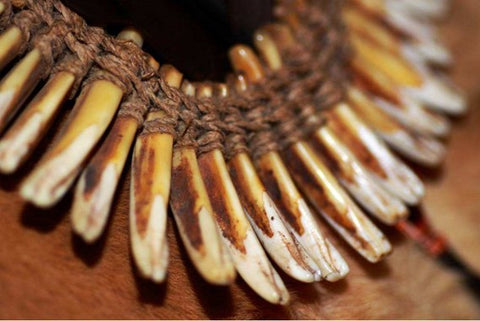
The second view is that the necklace is the evolution of the custom of “robbed marriage”, and that the necklace originated from the period of transition from matrilineal clan to patrilineal clan in primitive society. At that time, human survival was gradually dominated by hunting and planting. Men were already in a dominant position economically, and the concept of private ownership began to emerge. This led to women retreating from the core position of the clan and becoming men’s vassals. In clan or tribal wars, the victor takes the women of the opposing tribe as trophies. To prevent them from escaping, they often tie their necks and hands with a chain or rope.
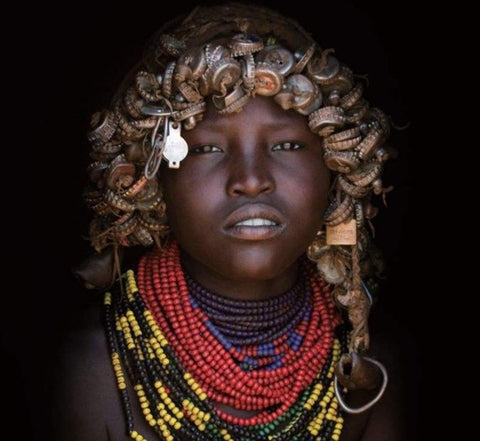
Later, it gradually evolved into a custom in some places, that is, when a man and a woman officially get married, the woman is taken to the man by “grabbing”, and metal ornaments are put around the woman’s neck or hands to show restraint. Nowadays, marriage robbery has long been eliminated, but the chains used to prevent women from escaping have evolved into ornaments made of gold, silver, and jewelry, becoming today’s necklaces (collars) and bracelets (bracelets). Today, when a young man presents necklaces and bracelets to his fiancée, it is to tie her heart and make her loyal to him forever, which is very civilized and elegant.
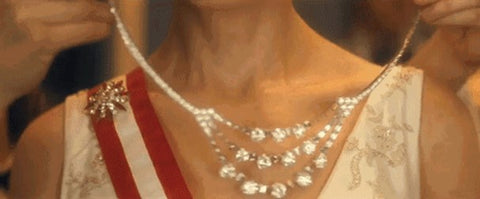
Practicality over decoration
According to relevant records, in 1966, an early Neolithic tomb was discovered in Hulin Village, Mentougou, Beijing. A necklace made of small conch shells was found around the neck of a girl’s remains. It shows that humans have begun to wear necklaces and other accessories a long time ago. But at that time, it was hard to say whether wearing necklaces was for aesthetic reasons. Because in the history of human decorative arts, utilitarianism precedes and is higher than artistry, which has been confirmed by many materials.
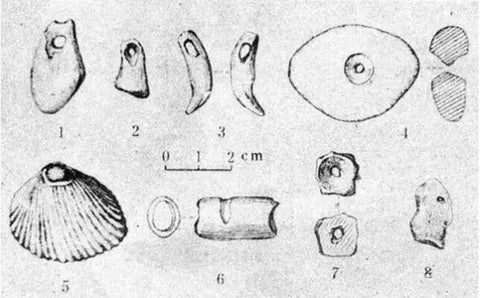
Protect yourself and save your life
Africans wear decorative items around their necks to protect their lives. They believe that the neck connects the head and torso and is the key to life. Therefore, it must be covered with ornaments and protected by supernatural magic. Totem people, especially those who choose totems, often choose part of the totem to serve as a charm on the neck. For example, take animal teeth, horns, shells, turtle shells, etc. and hang them around the neck.
Australians also wear kangaroo hair or kangaroo teeth into a letter shape and wear them on their chests. Undoubtedly, they are all magic acts performed to seek blessings from the totem. In the distant Paleolithic Age, cavemen on the top of the mountain connected small stone beads, small sparkling stones, animal teeth, animal bones and other perforated holes and hung them on their fronts. Many people believe that this was the predecessor of the necklace.
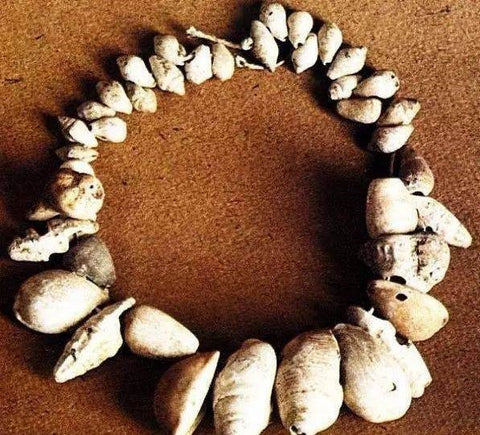
Counting function
Ethnologists believe that the behavior of primitive peoples wearing necklaces is not for beauty, but for the need of counting and remembering things. At most, it is just to compete among their companions who has hunted more animals. It is for a utilitarian purpose. The gradual development from utilitarian to aesthetic is gradually formed through the passage of time.
In the Neolithic Age, it was discovered from excavated tombs that these charms had many traces of artificial production in terms of particle size and material selection. Jade ornaments were also found in some unearthed cultural relics. These jade ornaments were made through certain craftsmanship. Some scholars believe that making decorations is the earliest craft technology of mankind.
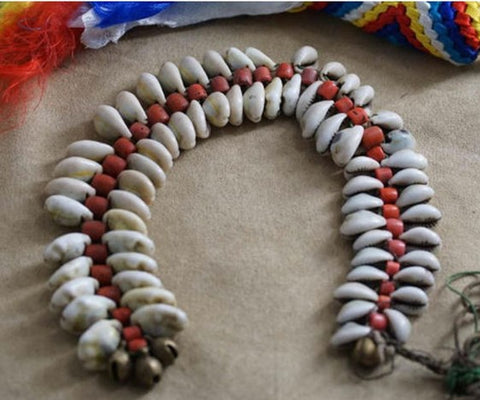
Counting function
Ethnologists believe that the behavior of primitive peoples wearing necklaces is not for beauty, but for the need of counting and remembering things. At most, it is just to compete among their companions who has hunted more animals. It is for a utilitarian purpose. The gradual development from utilitarian to aesthetic is gradually formed through the passage of time.
In the Neolithic Age, it was discovered from excavated tombs that these charms had many traces of artificial production in terms of particle size and material selection. Jade ornaments were also found in some unearthed cultural relics. These jade ornaments were made through certain craftsmanship. Some scholars believe that making decorations is the earliest craft technology of mankind.
